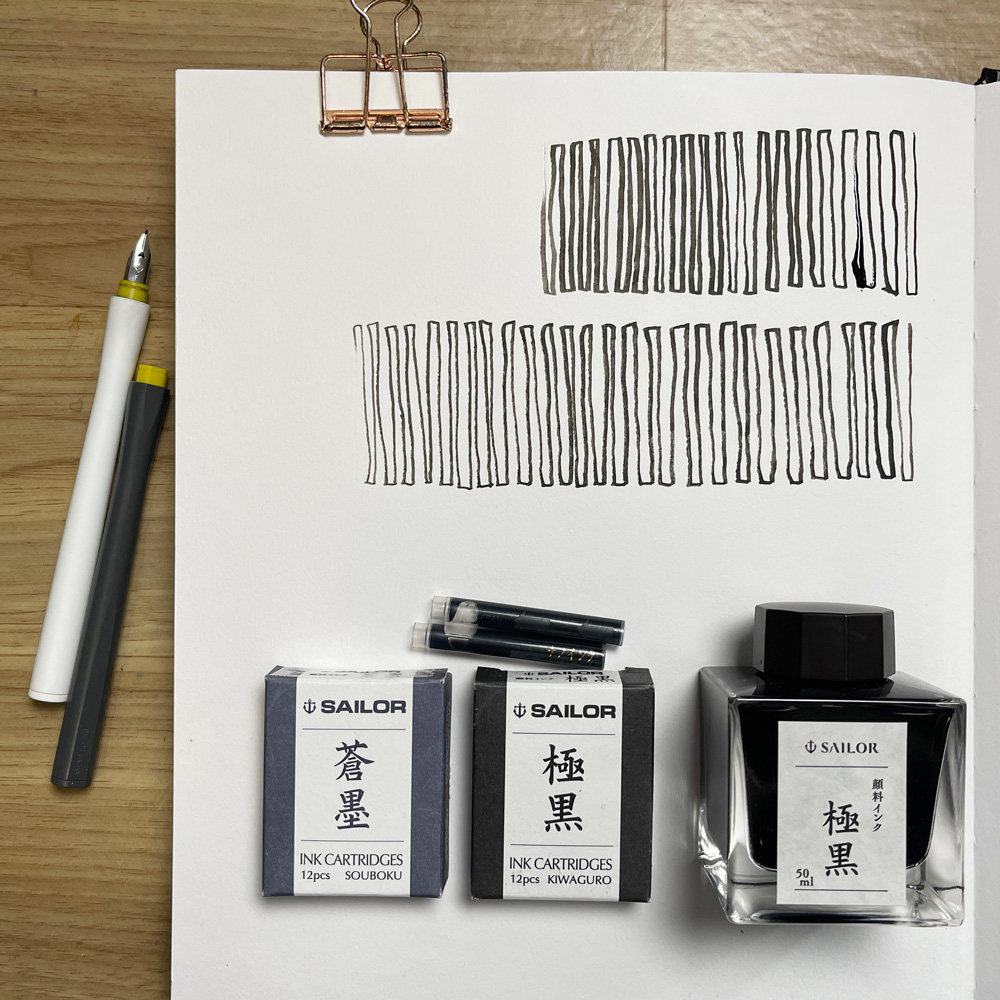
I’ve added a few Sailor products to my sketching tools in recent months… and it’s time to share them.
Sailor Kiwaguro pigmented ink
A few months ago my friend @spatialsketch told me about this pigmented ink and so I bought a bottle. She also told me that it came in cartridges and I noticed the Kinokunyia in Sydney stocked them. I use bottled ink 99% of the time – refilling my fountain pens using a convertor or refilling cartridges (see this article for more details).
But there are times when having the option of a cartridge would be handy – ie. having a spare cartridge in my bag would be great if I happen to run out of ink when I’m out sketching for the day. In fact, the barrel of the Sailor Fude de Mannen has space for a second cartridge!
The other day I had left my fude pen at home (I had taken the pen out of my bag to refill and forgotten to put it back!) but I was able to pop into Kinokunyia and buy another 55-degree Sailor Fude de Mannen (green) pen and a pack of cartridges. (I can always do with another Fude pen, can’t I?)
And while I was there I saw a blue option – the Souboku ink which is also pigmented. So I bought a second Fude (the dark blue 40-degree version). Hopeless I know! 🙂
I’ve heard from a few people that this pigmented ink is not as quick drying as other options (such as my favourite – De Atramentis Document Ink) but I didn’t notice any problems as I sketched with both inks.
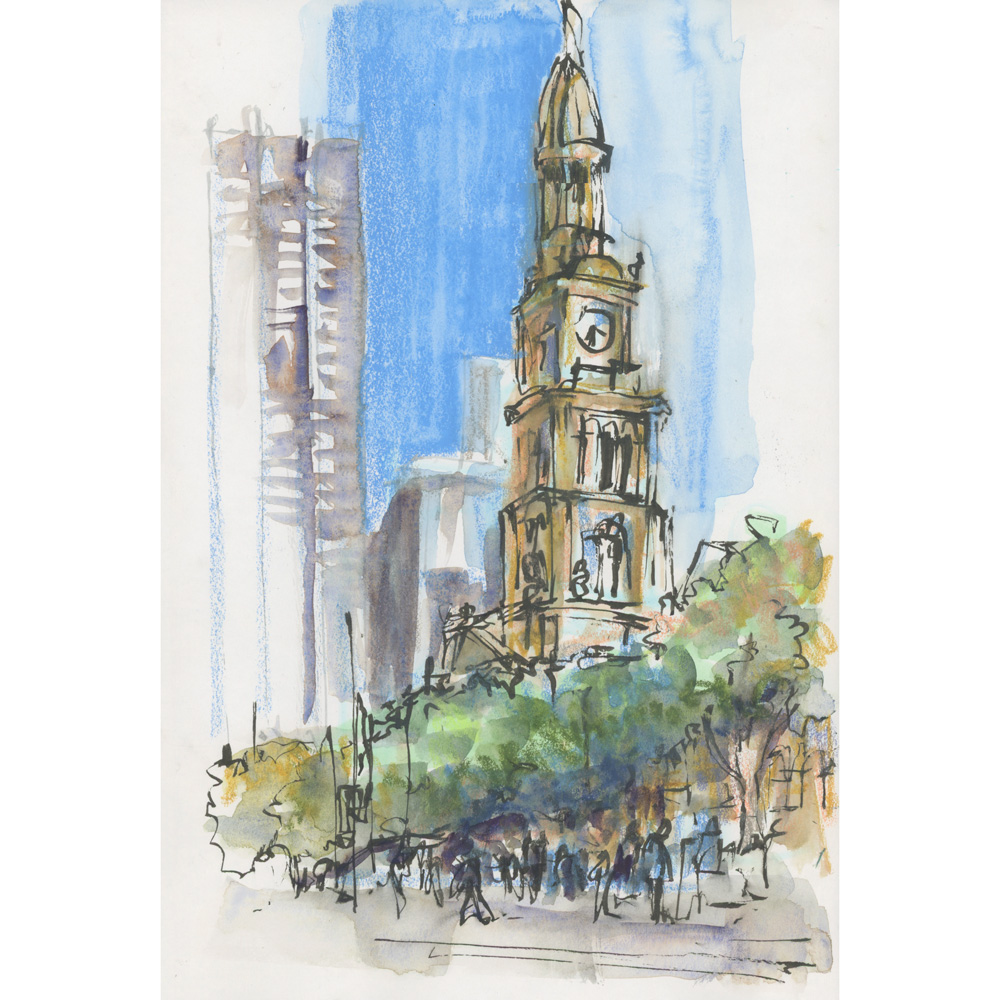
And a sketch done with the black ink.
 When I did some tests at home the ink did seem to be a little slow to dry but so far using it for my typical urban sketching has worked fine.
When I did some tests at home the ink did seem to be a little slow to dry but so far using it for my typical urban sketching has worked fine.
The other Sailor product that I’ve recently added to my gear is a Sailor Fude dip pen. This is another thing that @spatialsketch told me about and I have to say that I’m very excited about this discovery!
The Hocoro dip pen is a small plastic nib holder – here is it in comparison with my Fude de Mannen fountain pen. The nib can be reversed and stored inside the handle for traveling which is great.
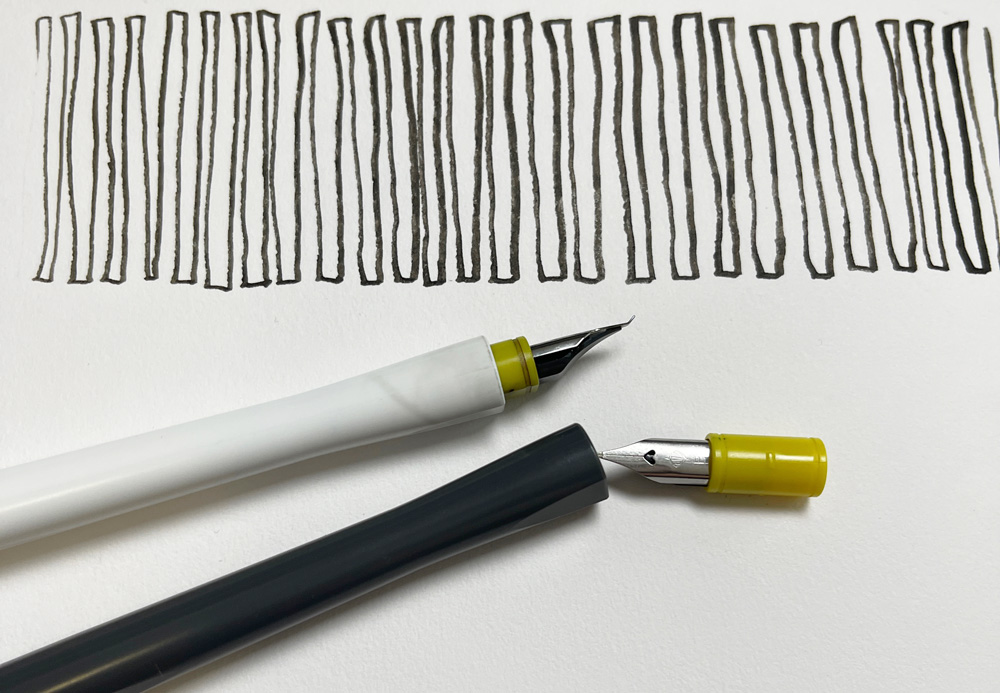
The dip pen has a 40-degree fude nib with an in-built reservoir and feels like my fude fountain pens.
And as for how much you can draw with one dip…
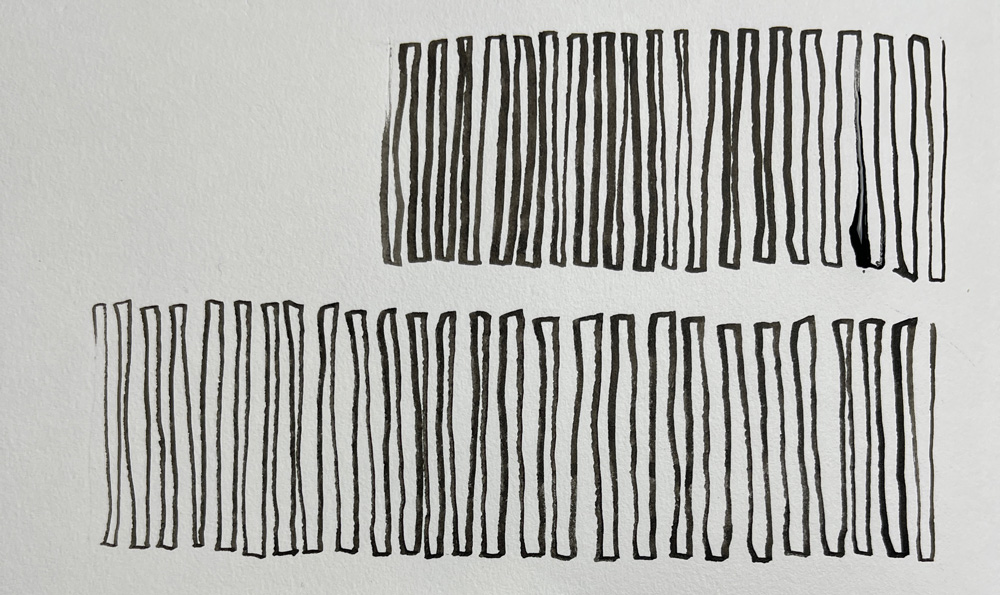
Answer: A lot! I’m very impressed!
This pen suits me better than the Kakimori nib. I prefer the more varied (sometimes scratchy) line of this pen.
I’m still getting used to the right amount of ink to pick up and so occasionally get big drops of ink. But that just adds to the fun!
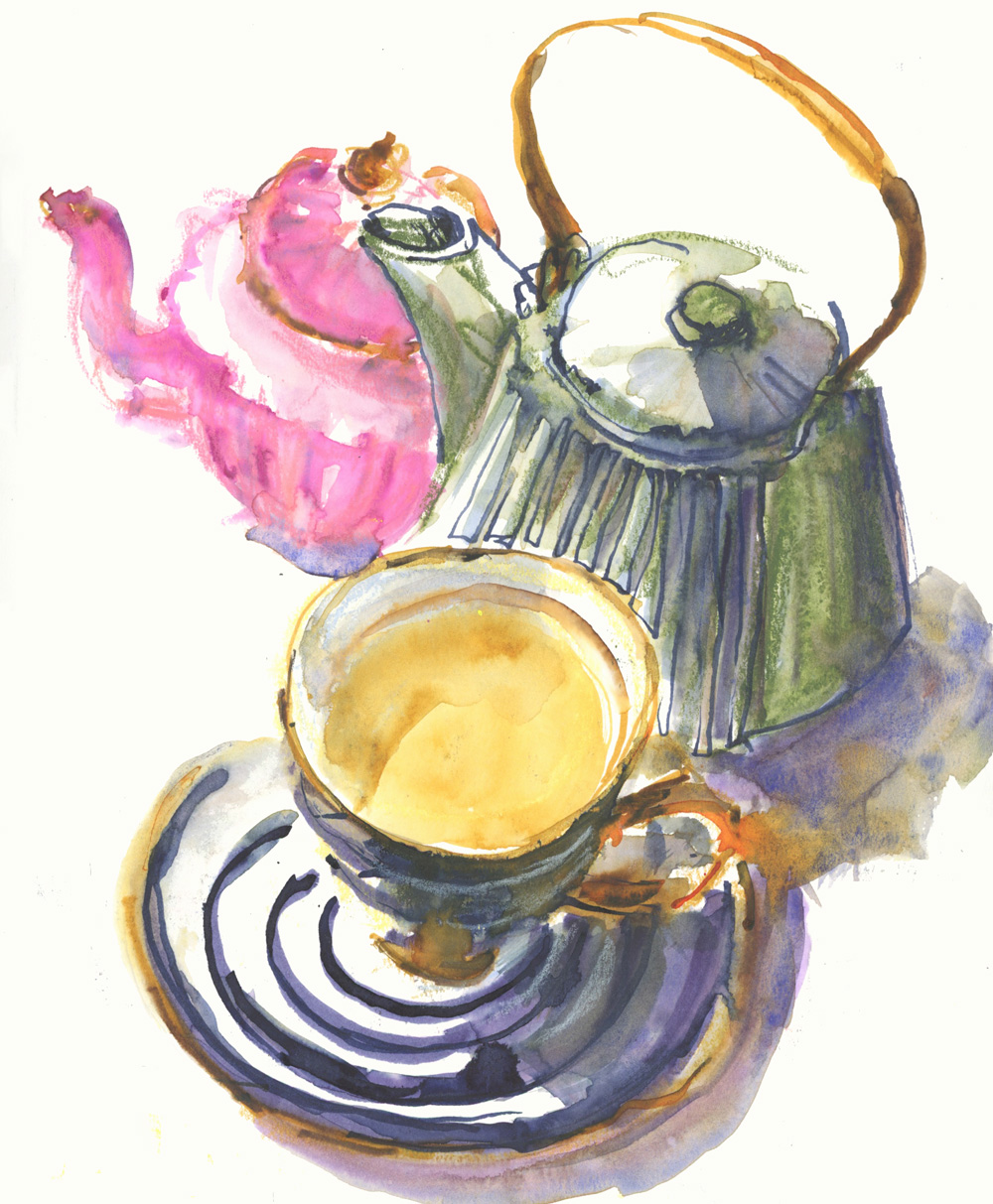
This sketch that I shared last week was done with this dip pen… and you can see some of the excess ink in places. Note especially the orange ink explosion that occurs at the teacup handle. (I was using Super5 Dehli ink in this sketch.)
I haven’t had much of a chance to properly test this pen but I can say already that I’m a fan! I’m busy finishing off the content for my Teacups course – starting next week – but once that settles down I’m looking forward to testing this dip pen properly.
I would love to hear from you if you have used either of these Sailor products
(If you are reading this via email, please click on the article title link below and add a comment on my blog. Thanks!)
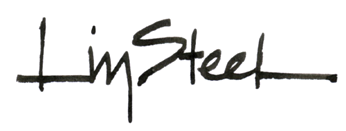
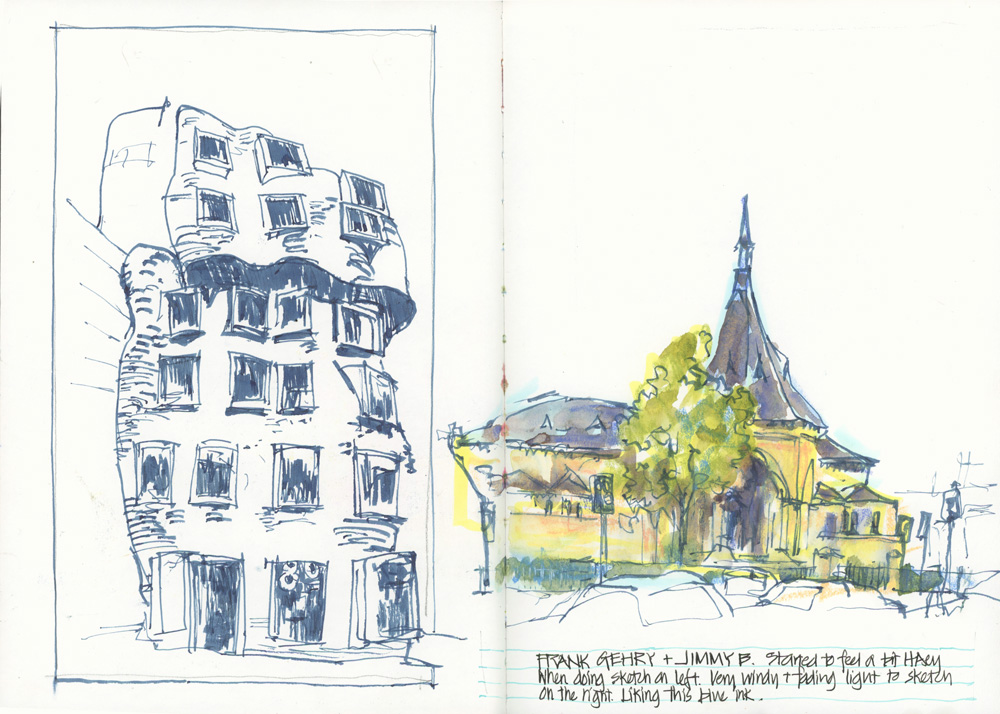
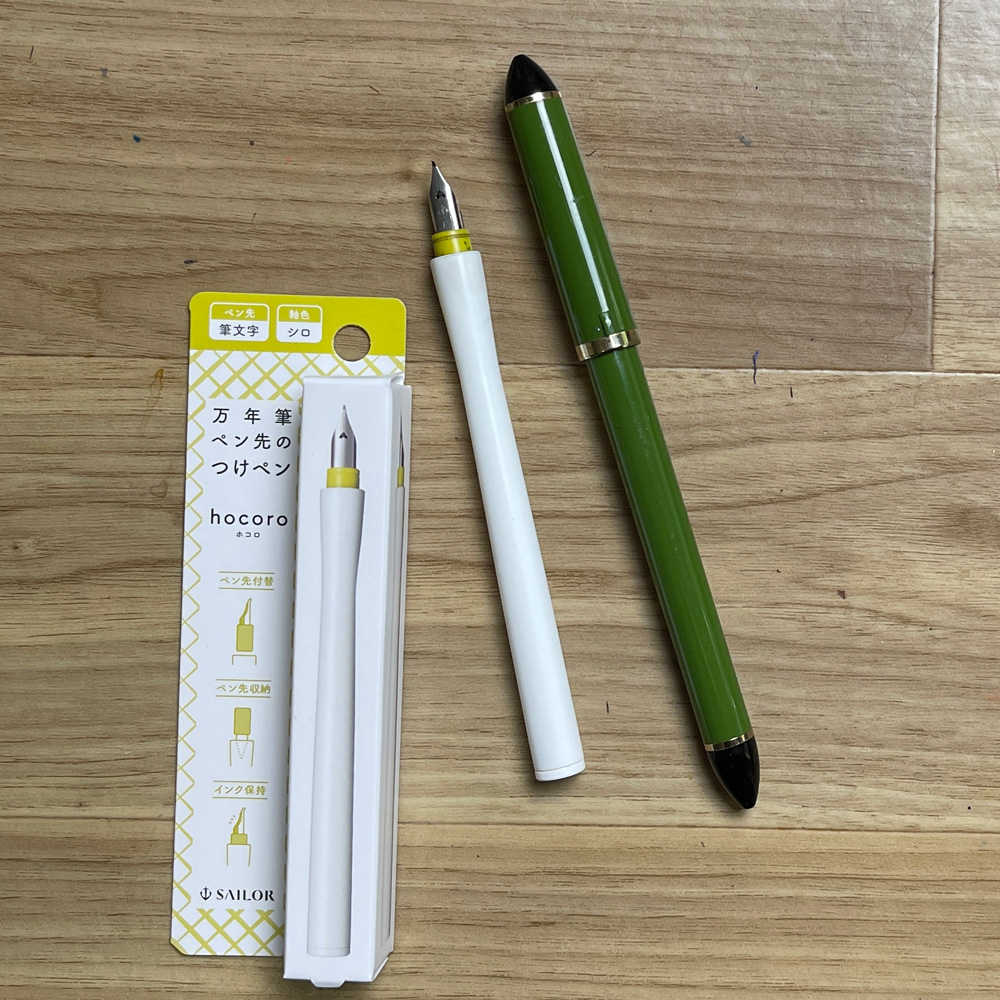
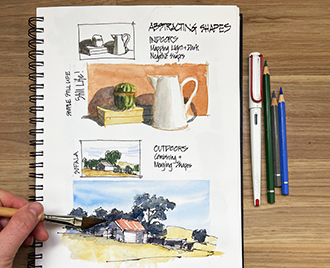

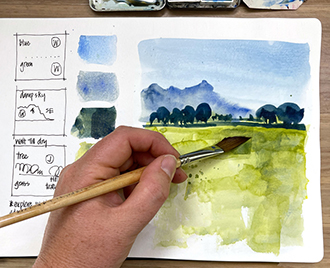
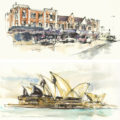
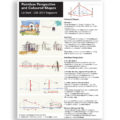
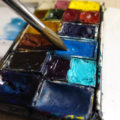
20 Comments
The weird thing about the Sailor ink is that it can lose its waterproof quality over time. I think Parka documented this, and I’ve experienced it, too. Probably not an issue for you since you don’t go back and add watercolor to a previously drawn sketch, and I rarely do, either. But it sure is weird!
Thanks for that info Tina. Very odd indeed!
I agree! That has been my experience as well. If I use “freshly opened bottle” or a new cartridge- the drawing is water resistant and I can apply watercolor. If the bottle has been opened for some time, or if the cartridge has been in the pen for a while, lines that I draw with kiwaguro ink are not going to be waterproof. I still looove that ink. So thick, rich and gorgeous dark black. So I just need t be mindful, work daily with it, or decide and use it for writing instead of drawing. My favorite pen to use it in is Sailor ProGear with medium nib. And sometimes in a dedicated fude pen. (I try to avoid mixing inks in my pens. This seems to help prevent clogging.)
Enjoying the teacup course!
Hi Iva!!! thanks for your insights… very curious and a bit disappointing!
This is a great post, Liz. I had no idea Sailor manufactured fude dip pens.
And I was able to find them locally!
I’m going to buy one. It’ll be a fun addition to my small collection of dip pens. I have some lovely oblique dip pens, that I use for writing. I never tried the obliques for drawing, because they’re meant to be used for writing Copperplate and Spencerian specifically.
It would also be interesting to use the fude dip pen with Ecoline. It’s not waterproof, I know, but I occasionally use it and the colors are lovely.
Hi Marianne – yes the Fude pen is very very exciting!
Hi Liz, I have a couple of bottles of this Sailor ink and Fude dip pens which I am now trying to teach myself how to use them . I have a wonderful collection of pens and inks a hobby of mine over a number of years now. I also have Twisbi and Lamy Joy pens which I purposefully purchased a few years back for eventually using them for sketching so at last I will be using them for following your wonderful classes. Thaks for another informative post. Isabel
Yes, very handy indeed to have the cartridges. I have the bottle of ink and the cartridges but the ink is not waterproof, so not advisable for drawing directly in ink and adding watercolour later.
Did you try the brass or stainless steel Kakimori dip nib? The stainless steel has more control and can write finer lines more easily. And it also has a bit of scratchiness/feedback. My Hocoro is a little wiggly, which bugs me a bit, but I need to try it out more.
Thanks for the info on the ink, Liz. I dug through my Goulet sample vials and found a sample of the Sailor Souboku dark blue ink. Going to give it a try. My current fav blue drawing inks are DeAtramentis Doc ink in dark blue and Platinum Pigment blue – great inks. Thanks for sharing!
Hello Liz,
I’d love to be able to say how much I like my Hocoro with a fudge nib but I’ve been looking for a fudge nib since Christmas when I received a Hocoro pen. I have several fountain pens with a fudge nib that I enjoy scribbling with. I will keep looking and maybe I’ll find one this year.
Good morning, Liz. Just looking at the photo of the Hokoro nib, it appears to be similar to the “mono” line weight and characteristics one might experience with a medium nib fountain pen. (As opposed to the more variable line possibilities one can achieve with traditional dip nibs, such as a Brause Blue Pumpkin 361 or a Manga G nib, for instance.) I’m intrigued by a pen holder that allows the dip nib to be reversed and stowed – there’s a pen holder and nib sitting on the passenger seat of my car right this minute because I don’t have a good way to store the darned thing while carrying from one place to another. Super curious about your longer term reactions to this tool.
Hi Mark!!! This nib is closer to the Fude fountain pen than a flexible dip pen nib. Which suits me as I prefer variation by changing angle rather than pressure. As for carrying dip pens have you seen the Tachikawa T-40 nib holder – it comes with a cap!
I’m fascinated at the idea of finding and trying a dip fude nib pen!
Yes, its very cool – I hope to use it more next month!
I’ve use (and love) the Sailor cartridges, especially for travel. Recently we were in Mexico City for 2 weeks and I always had a cartridge in my pocket. In addition to the navy and the black there is also a clear blue Siebuku… it’s lovely!
Thanks for sharing John – good to hear. Love the look of that Siebuku ink!
I just received a Fude green pen as a gift. I really think I’m going to like it but it takes some getting used to as I normally use the Kakimori. Enjoyed your article as it gave me some insight to the Fude.
Hi Gloira – how exciting. I does take a while to get used to. Most important… make sure you have a loose grip so you can easily adjust the angle of the pen while you are sketching. Enjoy!
40º fude Sailor is now my every day sketching pen. It has a lovely clean-rough balance for what I need. A great substitute to Lamy safari, adding more expression in a subtle way. Still using the green one for shading and flora!
NEWSLETTER
Subscribe for first notification of workshop + online classes and more.